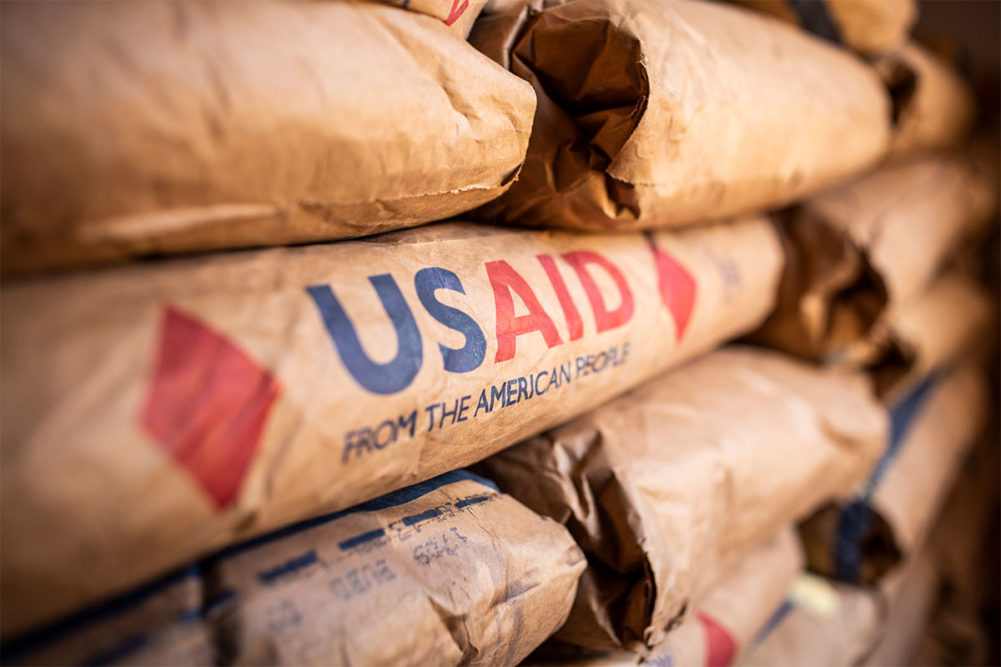WASHINGTON — Reflecting the programs’ broad, impactful reach around the globe and 70 years of bipartisan support, international food aid programs funded by the federal government should be included in the fiscal 2025 federal budget, according to a large group of US associations, companies and non-governmental organizations. The group said support for the programs in the coming fiscal year should be raised to at least $2.4 billion in agricultural appropriations.
The group, led by the North American Millers’ Association, advocated for numerous programs, including P.L.480 Title II Food for Peace, Food for Progress, and McGovern-Dole International Food for Education within the Agriculture, Rural Development, Food and Drug Administration, and Related Agencies appropriations bill. The programs “help reach millions of vulnerable people around the world,” the group said.
Drought, military conflict, inflationary pressures and other disruptive forces necessitate continued global food assistance, the group said.
“Chronic and acute hunger have continued to rise, and the UN World Food Programme warns that the number of people facing crisis levels of food insecurity has risen to 333 million as a result of lingering effects from the COVID-19 pandemic, ongoing conflict (including the war in Ukraine and the humanitarian crisis in Gaza) and climate-related extreme events,” the group said. “According to the Mid-Year Update of the Global Report on Food Crises, there are currently at least 238 million acutely food insecure people around the world, which is a 10% increase from the 2022 figure. With hunger on the rise, now is the time for America to continue its global leadership role by showing full support for US international food assistance programs.”
In addition to benefiting recipients, international food programs provide economic and national security benefits to the United States, the group said. A large proportion of the aid is marked “from the American people,” the letter added.
“Ultimately, these kinds of foreign assistance programs help create a firm foundation for vulnerable communities to grow and prosper, which is why many former food aid recipient countries are now among the most important US trading partners,” the group said.
Calling the use of US commodities for food aid a “cornerstone” of US foreign assistance for years, the group said the approach taken in formulating aid programs “has continually evolved and adapted to meet changing needs.”
Specifically, aid programs in recent years have used a combination of US commodities, cash, vouchers and locally purchased food.
The programs involve a joint public-private partnership that engages American farmers, millers, mariners, port workers, private voluntary organizations (PVOs), and the US government. Acknowledging that stakeholders have policy differences at times, the groups said they “stand united” in their belief in food aid and their valuable role in saving lives and boosting national security.
“We ask that you continue the lifesaving and life improving work of food aid by increasing the agriculture appropriations funding in fiscal year 2025 to at least $2.4 billion to carry out the necessary and vital work accomplished in the P.L. 480 Title II Food for Peace, Food for Progress, and McGovern-Dole programs,” the groups concluded.
The letter, signed by 123 associations, companies and non-governmental organizations, was directed to key members of the House and Senate appropriations committees’ subcommittees on agriculture, including Representative Andy Harris of Maryland, Representative Sanford Bishop of Georgia, Senator Martin Heinrich of New Mexico and Senator John Hoeven of North Dakota.
NAMA member companies that signed the letter included SEMO Milling, Bunge, Cargill, Didion Milling, Inc.; Grain Millers, Inc.; Lifeline Foods; and REPCO.



